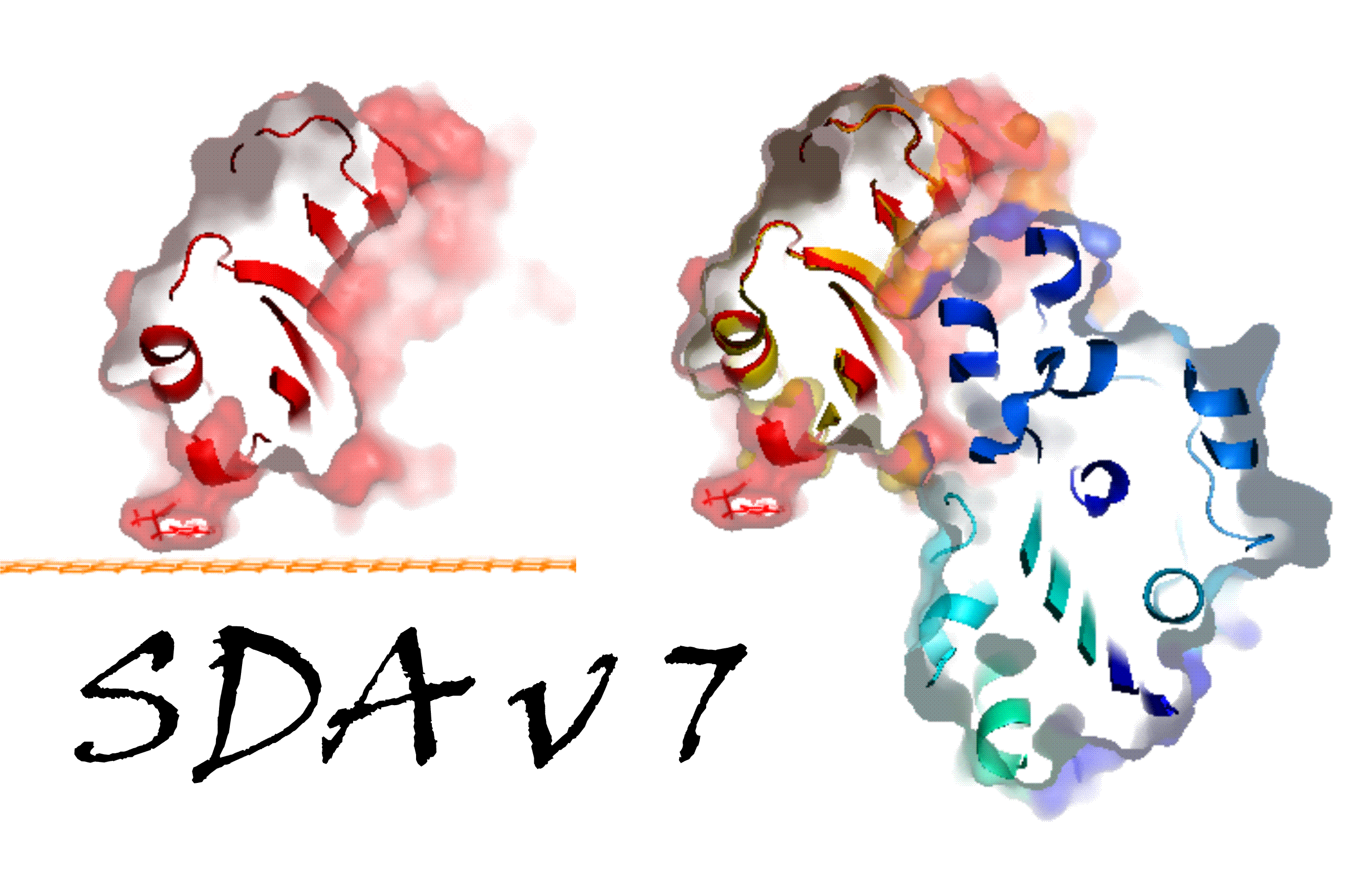Macromolecular interactions and diffusional association

We are developing methods to predict protein-protein interactions and how proteins bind to surfaces and membranes. These methods mostly rely on Brownian dynamics simulation with SDA and molecular dynamics simulation. SDA can be used to simulate the association of two solutes, e.g. two proteins, in implicit solvent. SDA can also be applied to simulate the diffusion of many solutes, e.g. a concentrated protein solution, to investigate oligomerization and diffusion in macromolecularly crowded environments, see Mereghetti et al, 2012. It can also be applied to simulate the adsorption of proteins on inorganic surfaces, see e.g. Romanowska et al., 2015, Reinhardt et al, 2021.
We apply these approaches to various biological problems. One example is the docking of an enzyme that contributes in the N-terminal processing of nascent polypeptide chains to the ribosome, see Sandikci et al, 2013. In another set of studies, we combined SDA docking with PIPSA analysis of protein electrostatic potentials to investigate the network of interactions of HSP40 J-protein co-chaperones that play an important role in driving protein disaggregation in eukaryotes, see Nillegoda et al, 2015, Nillegoda et al, 2017. Electrostatic interactions also play an important role in the formation of complexes between linker histone proteins and nucleosomes, for which we investigate the binding mechanism and the effects of variations in protein and DNA sequence (for review, see Öztürk et al, 2020). We adopt a multiresolution simulation approach, combining Brownian dynamics with coarse-grained and atomic detail molecular dynamics, to simulate the interaction of cytochrome P450 enzymes with phospholipid bilayers and to generate electron transfer competent structural ensembles of the complexes of membrane-bound cytochrome P450s with cytochrome P450 reductase, see e.g. Mukherjee et al, 2021.